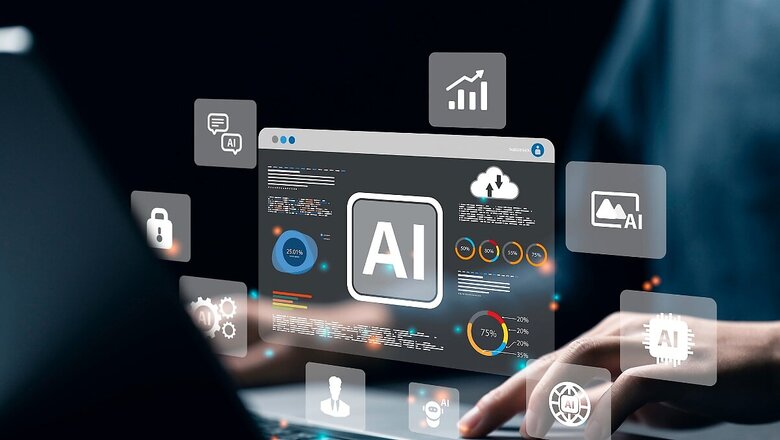
views
AI and AI chatbots significantly transform HR roles and employee interactions within organisations. AI chatbots provide employees with instant answers to HR-related queries, such as benefits information, leave policies, and payroll details, reducing the need for direct human intervention.
AI tracks employee performance metrics and provides real-time feedback, helping managers make informed decisions about promotions, rewards, and professional development.
Also Read: Future Of AI: Legal Challenges In The Era Of Digital Personal Data Protection Act, 2023
AI tools analyse an employee’s performance data and suggest personalised training and development programs to enhance their skills and career growth.
AI is also automating repetitive HR tasks such as payroll processing, benefits administration, and attendance tracking, freeing up HR professionals to focus on more strategic activities.
Several companies utilise AI chatbots to support mental health by providing resources, conducting initial assessments, and directing employees to appropriate professional help if needed.
Also Read: What Is PM Kisan AI Chatbot? Here’s How Farmers Can Get Quick Answers About The Scheme
To understand how AI intervention in organisational management is leading to multiple changes, Vikas Kakkar, founder and CEO of Amara.ai, shares some key areas where these technologies are making an impact. Edited Excerpts;
How do you see the role of AI evolving in the HR tech industry over the next five years? What are some of the most promising innovations currently being developed?
The role of AI in the HR tech industry is set to evolve significantly over the next five years. AI will increasingly be used to streamline HR processes, enhance decision-making, and improve employee experiences.
Key areas of innovation include AI-driven recruitment tools that use predictive analytics to identify top talent and reduce bias, and AI-powered chatbots that provide 24/7 support for employee queries, enhancing engagement and satisfaction.
Additionally, advanced AI algorithms are being developed to analyse employee data, predict turnover, and suggest personalised development plans, fostering a more proactive approach to talent management.
Another promising innovation is the use of natural language processing (NLP) to gain insights from employee feedback, enabling organisations to address issues more effectively. These advancements will not only optimise HR operations but also contribute to creating a more dynamic, inclusive, and responsive workplace environment.
AI-powered solutions often face the challenge of maintaining a human touch in their interactions. How do you strike a balance between leveraging advanced technology and ensuring a personalised, human-centric approach in your solutions?
To strike a balance between leveraging advanced AI technology and ensuring a personalised, human-centric approach. For example, Amara algorithms are trained on data that captures human emotions, context and nuanced communication, allowing them to respond with empathy and emotional intelligence.
We also identify the right touchpoints where human intervention is necessary. We focus on creating interfaces and interaction flows that are intuitive, user-friendly and considerate of the human experience. Transparency in AI operations is also key; we make it clear to employees when they are interacting with an AI versus a human, which builds trust and understanding.
Employee engagement is a critical aspect of organisational success. What trends do you foresee shaping the future of employee engagement, and how can companies adapt to these changes to foster a more engaged workforce?
Employee engagement is crucial for organisational success and several trends are expected to shape its future. Personalised employee experiences will be a key focus, with companies leveraging AI and data analytics to tailor programs and initiatives to individual needs.
Real-time feedback mechanisms will also become more prevalent, replacing traditional annual reviews and enabling continuous improvement.
Additionally, the rise of remote and hybrid work models will require companies to rethink their engagement strategies. Flexible work arrangements, virtual team-building activities and digital collaboration tools will be essential for keeping remote employees engaged and connected.
Another trend is the increasing emphasis on employee well-being. Companies will need to prioritise mental and physical health initiatives, offer support for work-life balance and create a positive, inclusive work environment.
Overall, companies that adapt to these trends by embracing personalisation, real-time feedback, remote work support and employee well-being will be better positioned to foster a more engaged and productive workforce.
How do AI chatbots help in identifying employees at risk of disengagement or attrition? Can you share some insights on how AI-driven solutions can provide measurable impacts on organisational performance, particularly in terms of employee satisfaction and productivity?
AI chatbots are instrumental in identifying employees at risk of disengagement or attrition. They engage with employees at critical touch points throughout their lifecycle, chatting with them in real-time to understand their sentiments, gather concerns, and capture reasons for disengagement. This continuous interaction occurs multiple times a year, allowing chatbots to identify potential risks or issues that require immediate HR intervention.
Leading a tech startup requires a unique set of skills and vision. What are the key leadership strategies you’ve employed to navigate the challenges and drive growth in a competitive market?
-Key leadership strategies I’ve employed include:
- Clear Vision and Mission: Establishing a clear vision and mission to align the team and provide a sense of purpose.
- Customer-Centric Approach: Prioritising customer feedback to continuously refine our product and ensure it meets market needs.
- Agile Methodology: Implementing agile practices to stay adaptable and respond quickly to changes in the market.
- Innovation and Experimentation: Encouraging a culture of innovation, where experimentation is valued, and learning from failures is seen as a pathway to success.
- Data-Driven Decisions: Utilising data analytics to make informed decisions and measure progress, ensuring we stay on track with our goals.
- Resilience and Persistence: Maintaining resilience in the face of challenges and demonstrating persistence to navigate through tough times while keeping the team motivated.
These strategies have been instrumental in navigating challenges and driving growth in a competitive market.


















Comments
0 comment